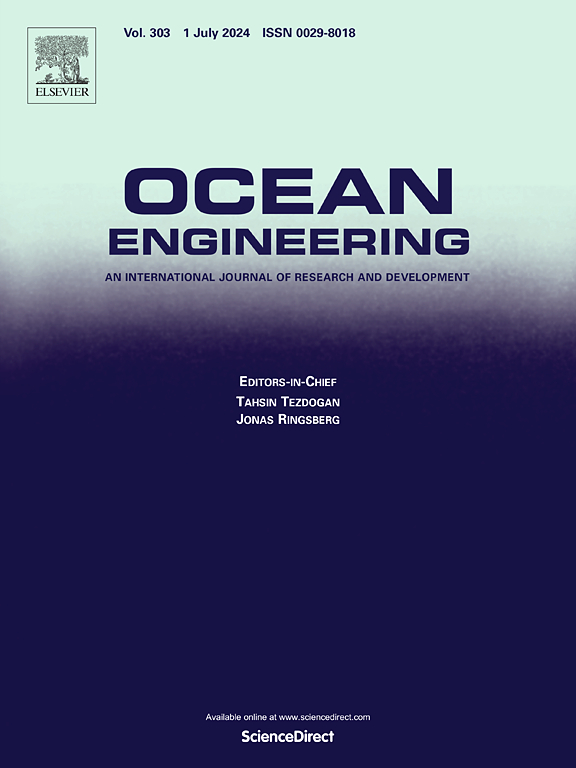Design, hydrodynamic analysis, and test of a manta ray-inspired soft wing for flapping wing propulsion of underwater gliders
IF 4.6
2区 工程技术
Q1 ENGINEERING, CIVIL
引用次数: 0
Abstract
Mobuliform swimming of manta rays represents a unique propulsion that can potentially be applied to underwater gliders (UGs) to enhance their maneuverability while minimizing noise. Inspired by the flexible pectoral fins of manta rays, this paper proposes a novel form of integral soft wing made of silicone rubber driven by a rigid fin ray insert, instead of flexible skin supported by rigid skeleton, and designs a UG prototype with the proposed soft wings (hereinafter referred to as SWUG). The soft wings reproduce spanwise oscillation and chordwise wave in mobuliform swimming, both of which contribute to thrust generation. The fluid-structure interaction is considered to analyze how the soft wings' physical parameters affect the UGs' hydrodynamic characteristics. The optimal configurations for the airfoil, dihedral angle, and aspect ratio are determined for excellent gliding performance. Further, the kinematic-Computational Fluid Dynamics (CFD) coupling approach is applied to simulate the intricate unsteady flow field resulting from the controlled motion of the soft wings. The evolution of the flow field and the thrust generation mechanism are analyzed, and the influence of flapping kinematic parameters on thrust performance and vehicle maneuverability are determined. Finally, the prototypes of the soft wings and SWUG are constructed to measure thrust and test swimming performance. A single soft wing can generate a maximum thrust of 3.6 N, and the SWUG can reach a top speed of 0.52 m/s. Experimental results validate the simulation findings and demonstrate the effective enhancement of UGs’ maneuverability by the soft wings. This research also offers insights into motion performance improvement and bionic design for other underwater vehicles.
求助全文
约1分钟内获得全文
求助全文
来源期刊

Ocean Engineering
工程技术-工程:大洋
CiteScore
7.30
自引率
34.00%
发文量
2379
审稿时长
8.1 months
期刊介绍:
Ocean Engineering provides a medium for the publication of original research and development work in the field of ocean engineering. Ocean Engineering seeks papers in the following topics.
 求助内容:
求助内容: 应助结果提醒方式:
应助结果提醒方式:


